sales@intentmarketresearch.com
+1 463-583-2713
Image-guided Radiation Therapy (IGRT) Market By Imaging Modality (MRI-guided Radiotherapy, Computed Tomography, Positron Emission Tomography, Ultrasound, 4D Imaging, LINAC, Portal CT Imaging), By Procedure (Intensity-modulated Radiation Therapy (IMRT), Stereotactic, Particle), By Disease Indication (Prostate Cancer, Breast Cancer, Head and Neck Cancer, Lung Cancer, Cervical Cancer), By End-users (Hospitals, Radiotherapy Clinics) and By Region; Growth Trends and Forecasts (2024 - 2030)
The Image-guided Radiation Therapy (IGRT) Market is expected to grow from USD 1.7 billion in 2023-e to USD 2.4 billion by 2030, at a CAGR of 5.3% during the forecast period. The IGRT is a competitive market, the prominent players in the global market include Accuray, Canon, C-Rad, Elekta, GE Healthcare, GenesisCare, Mevion, Philips, RefleXion, Siemens, Sun Nuclear, ViewRay, and Vision RT. Increasing demand for personalized therapies across the globe is driving the market growth.
.jpg)
Click here to: Get FREE Sample Pages of this Report
The image-guided radiation therapy (IGRT) market is expected to grow significantly due to the ability of IGRT to deliver precise doses at the site of action and improve patient outcomes with reduced time of therapy. The accuracy of radiation therapy is increased when cutting-edge imaging technologies are incorporated into the treatment plan. This is especially crucial when treating tumors in motion-prone areas such as the prostate or lungs that are close to important structures.
IGRT is a medical procedure used in radiation oncology to target malignant tumors with therapeutic radiation with the least amount of damage to the surrounding healthy tissues. The integration of imaging technologies with the planning and delivery of radiation therapy treatment is the fundamental component of IGRT. This guarantees that, even in cases where the tumor position varies as a result of factors such as organ motion, anatomical changes in the patient, or respiratory motion, the radiation is precisely targeted to the tumor.
The demand for IGRT continues to grow as industries utilize the advanced technologies for improved treatment options and patient outcomes, thereby driving ongoing research and development in this space.
Image-guided Radiation Therapy (IGRT) Market Dynamics
Increasing Prevalence of Cancer Across the Globe will Drive the Market
The rise in the global prevalence of cancer and the growing demand for precise, accurate diagnosis, therapeutic monitoring, and development of precision medicines are contributing to the IGRT market growth. The rising burden of cancer disease is a major cause of death across the globe that requires more precise radiation that can effectively kill the cancer cells. For instance, in 2022, according to the American Cancer Society, an estimated 1.9 million new cases of cancer will be diagnosed, and 609,360 people will die from cancer.
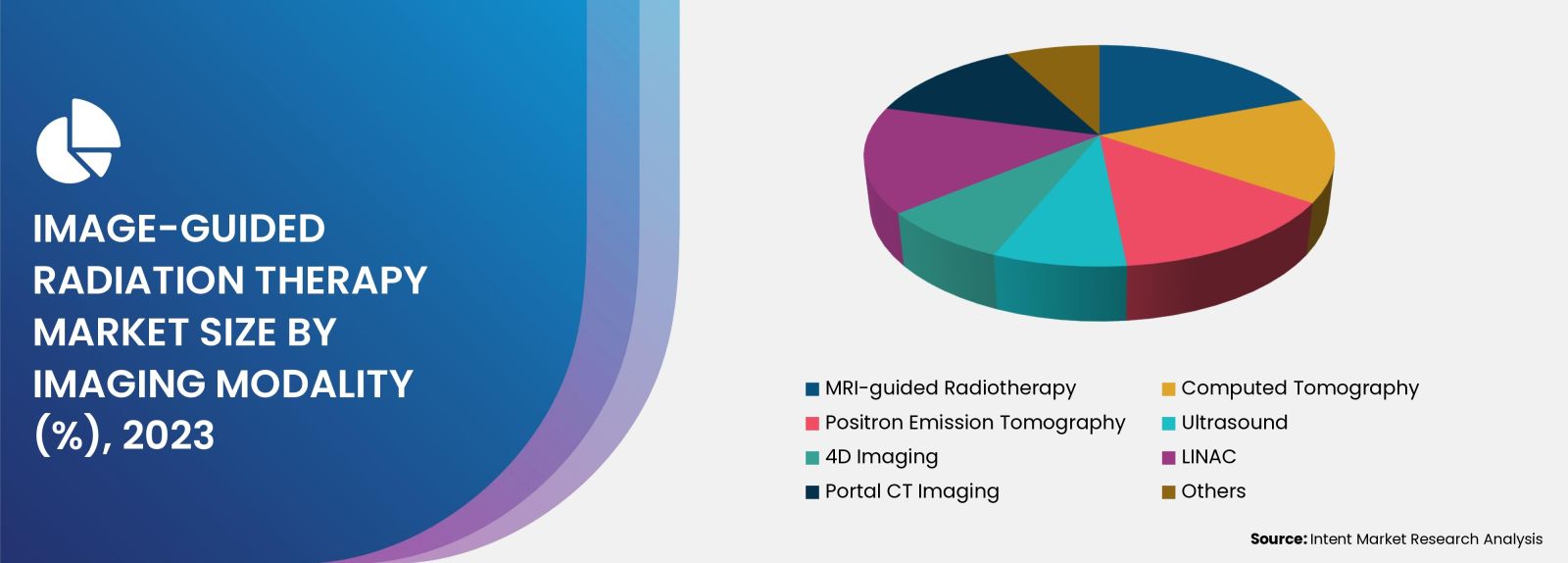
High Capital Costs Associated with its Implementation May Hinder its Adoption in SME’s
The cost of Image-guided Magnetic Resonance Radiotherapy (MR-IGRT) is higher than that of Image-guided cone beam Computed Tomography Radiotherapy (CBCT-IGRT) due to the increased capital and personnel costs involved. The overall cost-effectiveness of MR-IGRT is contingent upon the quantity of fractions needed and the level of MR-IGRT toxicity.
Additionally, compared to other imaging modalities, such as those in which the CT scanner is fixed to the LINAC head or employs planar imaging, the cost of buying and maintaining a diagnostic CT machine is higher. Additionally, the cost of preparing the treatment room is higher as a larger space is required. For instance, in 2020, according to a report published in the British Journal of Radiology, MR-IGRT added USD 1,459 to SBRT courses and USD 10,129 to conventionally fractionated radiotherapy courses per course.
Image-guided Radiation Therapy (IGRT) Market Segment Insights
The MRI-Guided Radiotherapy Segment Held the Major Market Share
The MRI-guided radiotherapy segment is expected to account a major market share due to various advantages including real-time monitoring, adaptive radiation therapy, and soft tissue visualisation with effective and accurate precision. It also offers better image contrast and can better differentiate between various body tissues and cells to identify the target tumours.
There have been recent developments in MRI-guided radiotherapy to lower toxicity rates and better treatment care to the patients. For instance, in March 2023, GenesisCare, a cancer care service provider launched ViewRay MRIdian stereotactic MRI-guided adaptive radiotherapy (SMART). The SMART therapy helps to reduce the burden of cancer treatment with a reduced toxicity rate level of up to 19% and compared to the CT group, 50% fewer patients in the MRI group reported a decline in bowel-related disease. This suggests that MRIdian provides a more focused treatment approach while safeguarding healthy tissue surrounding malignant cancer cells.
The Stereotactic Segment is Expected to Grow at a Rapid Pace During the Forecast Period.
The stereotactic segment is projected to expand at a rapid pace owing to the streamlined approach of IGRT is in line with the effectiveness of stereotactic therapy, which requires fewer treatment sessions than conventional methods. This enhances patient satisfaction & adherence and benefits healthcare providers, patients, and resource allocation.
Major market players are working towards the development of advanced and automated treatment plans to provide efficient treatment options to increase patient outcomes. For instance, in 2022, Elekta, a Sweden-based company that develops and produces radiotherapy devices launched a new radiosurgery system called Elekta Esprit. Esprit provides treatment team collaboration tools, remote accessibility, and enhanced visualization for clinicians. Additionally, it offers a more gentle and individualized approach to radiosurgery while having the accuracy necessary to treat even the most difficult targets.
Cervical Cancer Segment Held the Largest Share in Image-guided Radiation Therapy Market
The cervical cancer held the largest market share owing to the rising number of cervical cancer cases. The main cause of cervical cancer is long-term infection with specific Human Papillomavirus (HPV) strains. A class of viruses known as HPV can infect the mouth, throat, and genital area, and develop over time from persistent infections with high-risk HPV types, even though many HPV infections clear up on their own without causing any problems. For instance, in November 2023, according to WHO, with an estimated 604,000 new cases and 342 000 deaths from cervical cancer in 2020, it is the fourth most common cancer in women across the globe.
Rising Demand for Precise Treatment Contributing to the Growth of the Hospital End-user Segment
The hospital is expected to account major market share in the end-users segment due to the rising number of radiotherapies and demand for precise radiation to reduce the toxicity level of radiation and improve patient outcomes. The hospital is equipped with advanced diagnostics and treatment technologies that can deliver precise doses at the site of action with minimal radiation and toxicity to the surrounding tissues. This convenience results from the fact that various medical requirements are combined under one roof, which lessens the need for patients to make numerous appointments at various locations.
For instance, in January 2022, Adaptive radiation therapy (ART) was first implemented in China at Peking Union Medical College Hospital (PUMCH) with an Ethos Therapy system. Through this program, a clinical trial investigating adaptive radiation for the postoperative treatment of endometrial and cervical cancer is launched by a research team.
North America is Poised for Significant Market Growth over the Forecast Period
North America is expected to hold the largest market share in IGRT owing to the rising cancer incidence in the region, ongoing research & development activities by key players, and advanced health infrastructure. Using incidence data from central cancer registries and mortality data from the National Center for Health Statistics, the American Cancer Society estimates the number of new cancer cases and deaths in the country and compiles the most recent data on population-based cancer occurrence and outcomes. It is anticipated that there will be 609,820 cancer deaths and 1,958,310 new cancer cases in the US in 2023.
Major Industry Players are Enhancing their Positions By Actively Developing Advanced Radiotherapies
The market is characterized by intense competition due to the presence of numerous international and domestic players. The IGRT market, in particular, is dominated by key players such as Accuray, Canon, C-Rad, Elekta, GE Healthcare, GenesisCare, Mevion, Philips, RefleXion, Siemens, Sun Nuclear, ViewRay, and Vision RT. These industry leaders are primarily focused on acquiring smaller players and innovating their product lines to provide novel treatment options to improve patient health. The success of market players is heavily dependent on their ability to adapt to changing market trends and consumer preferences.
- In February 2023, RefleXion Medical announced marketing approval for SCINTIX therapy for cancer treatment. SCINTIX is a biology-guided radiotherapy that is developed for the detection of early-stage and late-stage cancers. To treat patients with indicated solid tumors of any stage, SCINTIX is the first and only radiation therapy that enables each cancer's unique biology to autonomously determine where and how much radiation to deliver, second by second, during actual treatment delivery.
- In May 2022, BrainLab acquired medPhoton GmbH which develops robotic imaging solutions for IGRT. The outcome of this partnership was the 2020 market launch of Loop-X, a mobile imaging robot that helps in IGRT. Brainlab for the development of Loop-X, made a strategic investment in medPhoton, and acquired exclusive distribution rights for the mobile imaging robot used in surgery.
Click here to: Get your custom research report today
Image-guided Radiation Therapy Market Coverage
The report provides key insights into the Image-guided radiation therapy market, and it focuses on technological developments, trends, and initiatives taken by the government in this sector. The report delves into market drivers, restraints, and opportunities, and analyzes key players as well as the competitive landscape within the market. The report offers the market size and forecasts for the Image-guided radiation therapy market in value (USD billion) for all the above segments.

Report Scope
|
Report Features |
Description |
|
Market Size (2023-e) |
USD 1.7 billion |
|
Forecast Revenue (2030) |
USD 2.4 billion |
|
CAGR (2024-2030) |
5.3% |
|
Base Year for Estimation |
2023-e |
|
Historic Year |
2022 |
|
Forecast Period |
2024-2030 |
|
Report Coverage |
Market Forecast, Market Dynamics, Competitive Landscape, Recent Developments |
|
Segments Covered |
Image-guided Radiation Therapy (IGRT) Market By Imaging Modality (MRI-guided Radiotherapy, Computed Tomography, Positron Emission Tomography, Ultrasound, 4D Imaging, LINAC, Portal CT Imaging, Others), By Procedure (Intensity-modulated Radiation Therapy (IMRT), Stereotactic, Particle, Others), By Disease Indication (Prostate Cancer, Breast Cancer, Head and Neck Cancer, Lung Cancer, Cervical Cancer, Others), By End-users (Hospitals, Radiotherapy Clinics, Others) |
|
Regional Analysis |
North America (US, Canada), Europe (Germany, France, UK, Spain, Italy), Asia-Pacific (China, Japan, South Korea, India), Latin America (Brazil, Mexico, Argentina), Middle East and Africa (Saudi Arabia, South Africa, Turkey, United Arab Emirates) |
|
Competitive Landscape |
Accuray, Canon, C-Rad, Elekta, GE Healthcare, GenesisCare, Mevion, Philips, RefleXion, Siemens, Sun Nuclear, ViewRay, and Vision RT |
|
Customization Scope |
Customization for segments, region/country-level will be provided. Moreover, additional customization can be done based on the requirements. |
|
Purchase Options |
We have three licenses to opt for Single User License, Multi-User License (Up to 5 Users), Corporate Use License (Unlimited User and Printable PDF) |
|
1.Introduction |
|
1.1. Study Assumptions and Market Definition |
|
1.2. Scope of the Study |
|
2.Research Methodology |
|
3.Executive Summary |
|
4.Market Dynamics |
|
4.1. Market Growth Drivers |
|
4.1.1. Increasing prevalence of cancer across the globe |
|
4.1.2. Increasing demand for personalized medicines |
|
4.2. Market Growth Restraints |
|
4.2.1. High cost associated with Image-guided Radiation Therapy |
|
4.3. Market Growth Opportunities |
|
4.3.1. Implementation of AI in remote surgery and radiation therapy |
|
4.3.2. Technological advancements in Image-guided Radiation Therapy (IGRT) |
|
5.Market Outlook |
|
5.1. Supply Chain Analysis |
|
5.2. Advances in Radiotherapy |
|
5.3. Technology Trends |
|
5.4. Patent Analysis |
|
6.Market Segment Outlook (Market Size & Forecast: USD Billion, 2023 – 2030) |
|
6.1. Segment Synopsis |
|
6.2. By Imaging Modality |
|
6.2.1. MRI-guided radiotherapy |
|
6.2.2. Computed Tomography |
|
6.2.3. Positron Emission Tomography |
|
6.2.4. Ultrasound |
|
6.2.5. 4D Imaging |
|
6.2.6. LINAC |
|
6.2.7. Portal CT Imaging |
|
6.2.8. Others |
|
6.3. By Procedure |
|
6.3.1. IMRT |
|
6.3.2. Stereotactic |
|
6.3.3. Particle |
|
6.3.4. Others |
|
6.4. By Disease Indication |
|
6.4.1. Prostate Cancer |
|
6.4.2. Breast Cancer |
|
6.4.3. Head and Neck Cancer |
|
6.4.4. Lung Cancer |
|
6.4.5. Cervical Cancer |
|
6.4.6. Others |
|
6.5. By End-user |
|
6.5.1. Hospitals |
|
6.5.2. Radiotherapy Clinics |
|
6.5.3. Others |
|
7.Regional Outlook (Market Size & Forecast: USD Billion, 2023 – 2030) |
|
7.1. Global Market Synopsis |
|
7.2. North America |
|
7.2.1. North America Image-guided Radiation Therapy Market Outlook |
|
7.2.2. USA |
|
7.2.2.1. USA Image-guided Radiation Therapy Market, By Imaging Modality |
|
7.2.2.2. USA Image-guided Radiation Therapy Market, By Procedure |
|
7.2.2.3. USA Image-guided Radiation Therapy Market, By Disease Indication |
|
7.2.2.4. USA Image-guided Radiation Therapy Market, By End-users |
|
*Note: Cross-segmentation by segments for each country will be covered as shown above. |
|
7.2.3. Canada |
|
7.2.4. Mexico |
|
7.3. Europe |
|
7.3.1. Europe Image-guided Radiation Therapy Market Outlook |
|
7.3.2. Germany |
|
7.3.3. UK |
|
7.3.4. France |
|
7.3.5. Spain |
|
7.3.6. Italy |
|
7.4. Asia-Pacific |
|
7.4.1. Asia-Pacific Image-guided Radiation Therapy Market Outlook |
|
7.4.2. China |
|
7.4.3. India |
|
7.4.4. Japan |
|
7.4.5. South Korea |
|
7.4.6. Australia |
|
7.5. Latin America |
|
7.5.1. Latin America Image-guided Radiation Therapy Market Outlook |
|
7.5.2. Brazil |
|
7.5.3. Argentina |
|
7.6. Middle East & Africa |
|
7.6.1. Middle East & Africa Image-guided Radiation Therapy Market Outlook |
|
7.6.2. Saudi Arabia |
|
7.6.3. UAE |
|
8.Competitive Landscape |
|
8.1. Market Share Analysis |
|
8.2. Company Strategy Analysis |
|
8.3. Competitive Matrix |
|
9.Company Profiles |
|
9.1. Image-guided Radiation Therapy Companies (Supply-Side) |
|
9.1.1. Accuray |
|
9.1.1.1. Company Synopsis |
|
9.1.1.2. Company Financials |
|
9.1.1.3. Product/Service Portfolio |
|
9.1.1.4. Recent Developments |
|
*Note: All the companies in the section 9.1 will cover same sub-chapters as above. |
|
9.1.2. Canon |
|
9.1.3. C-Rad |
|
9.1.4. Elekta |
|
9.1.5. GE Healthcare |
|
9.1.6. GenesisCare |
|
9.1.7. Mevion |
|
9.1.8. Philips |
|
9.1.9. RefleXion |
|
9.1.10. Siemens |
|
9.1.11. Sun Nuclear |
|
9.1.12. ViewRay |
|
9.1.13. Vision RT |
Let us connect with you TOC
Intent Market Research employs a rigorous methodology to minimize residual errors by carefully defining the scope, validating findings through primary research, and consistently updating our in-house database. This dynamic approach allows us to capture ongoing market fluctuations and adapt to evolving market uncertainties.
The research factors used in our methodology vary depending on the specific market being analyzed. To begin with, we incorporate both demand and supply side information into our model to identify and address market gaps. Additionally, we also employ approaches such as Macro-Indicator Analysis, Factor Analysis, Value Chain-Based Sizing, and forecasting to further increase the accuracy of the numbers and validate the findings.
Research Approach
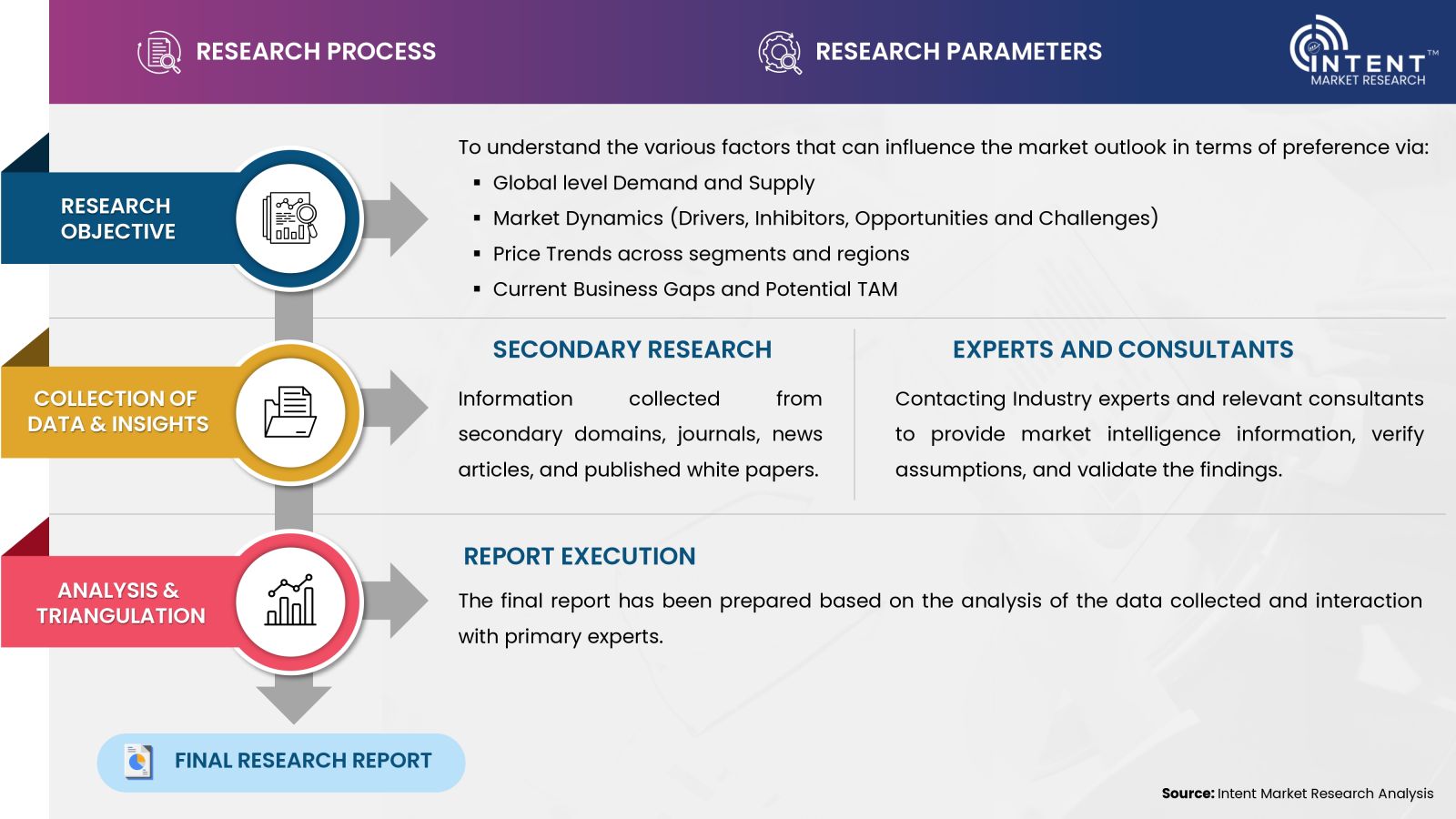
- Secondary Research Approach: During the initial phase of the research process, we acquire and accumulate extensive data continuously. This data is carefully filtered and validated through a variety of secondary sources.
- Primary Research Approach: Following the consolidation of data gathered through secondary research, we initiate a validation and verification process to verify all the market numbers and assumptions by engaging with the subject matter experts.
Data Collection, Analysis and Interpretation:
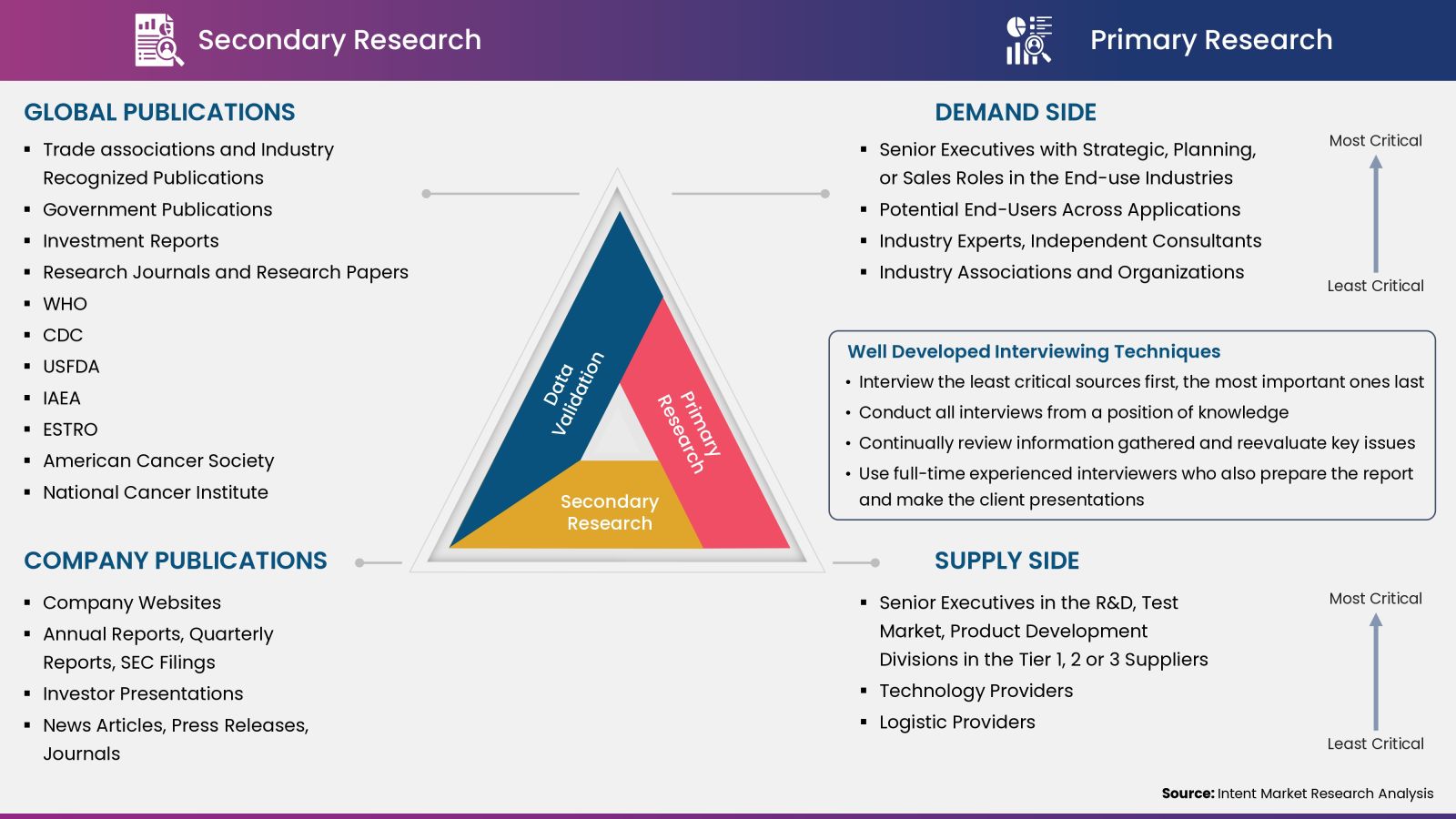
Research Methodology
Our market research methodology utilizes both top-down and bottom-up approaches to segment and estimate quantitative aspects of the market. We also employ multi-perspective analysis, examining the market from distinct viewpoints.
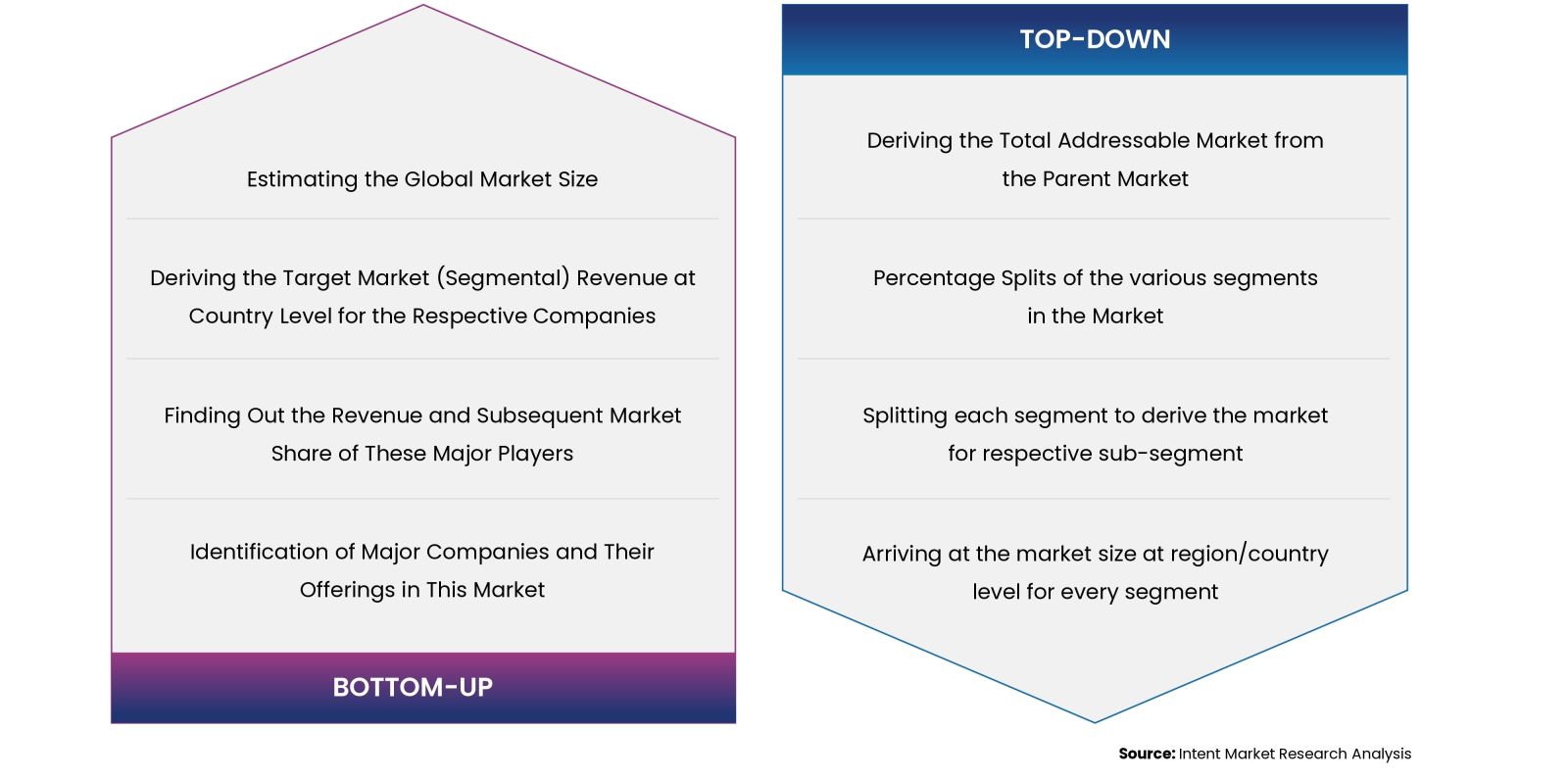
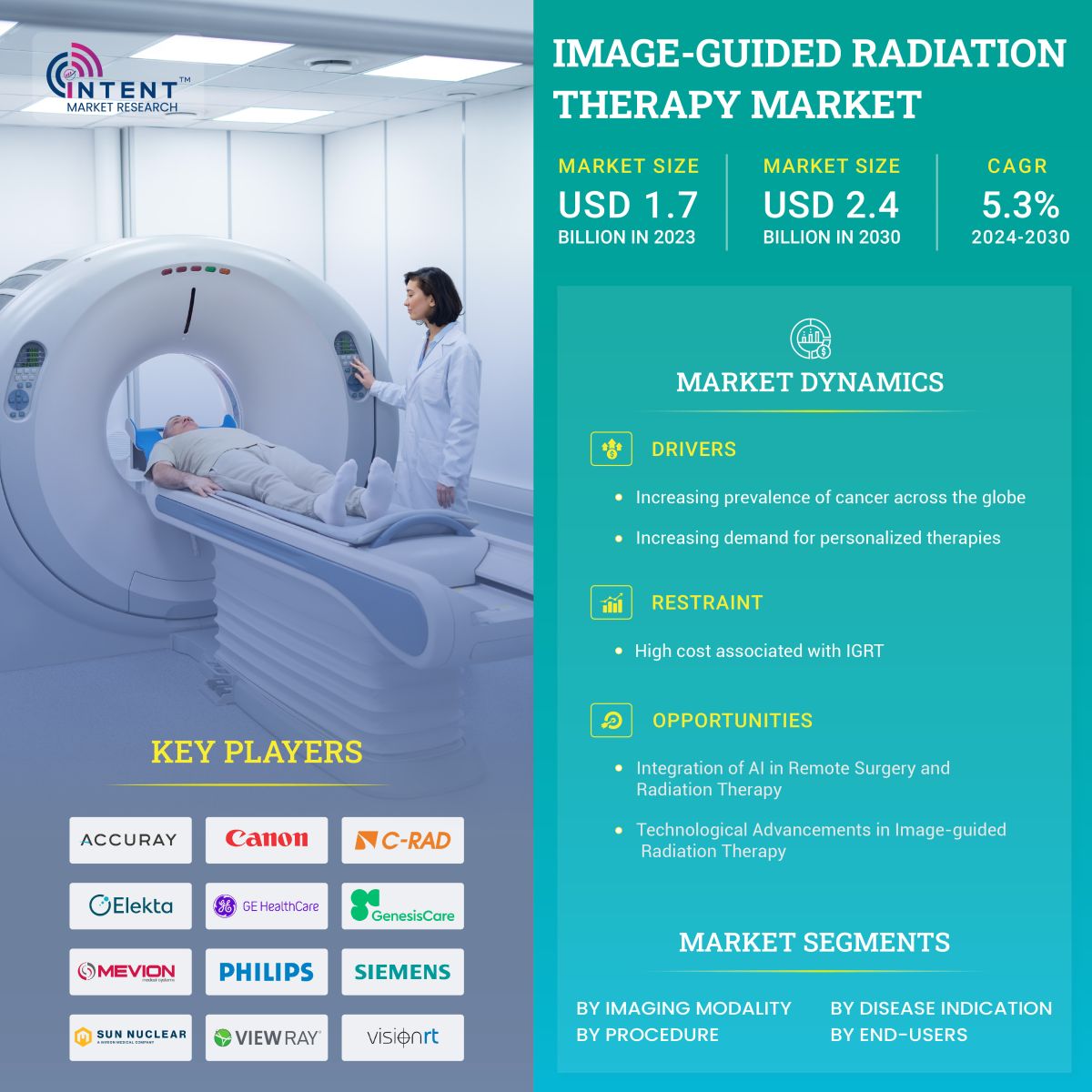
Available Formats


